Cotton-top Tamarin (Saguinus oedipus)
The Cotton-top Tamarin (Saguinus oedipus) is one of the most distinctive primates in the world, easily recognized by its striking white mane and small size. These monkeys are native to Colombia and are critically endangered due to habitat destruction, illegal pet trade, and deforestation. In this article, we will explore everything about this unique species, including its habitat, behavior, diet, threats, and conservation efforts.
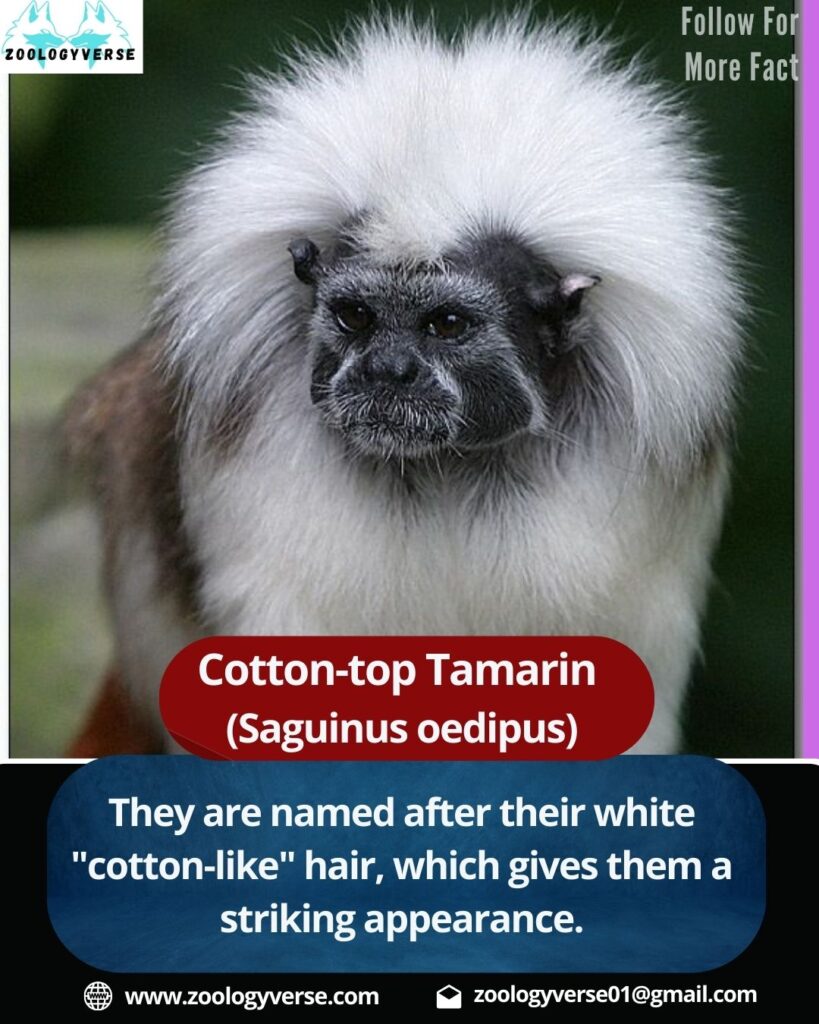
What is a Cotton-top Tamarin?
The Cotton-top Tamarin is a New World monkey that belongs to the Callitrichidae family. This species is one of the smallest primates in the world, with an average body length of 20–25 cm (8–10 inches) and a long tail that can grow up to 40 cm (16 inches). Adults typically weigh around 400–500 grams (0.8–1.1 pounds).
One of its most striking features is its fluffy white crest of hair, which contrasts with its black face and brownish fur. This unique appearance makes it one of the most recognizable primates in the world.
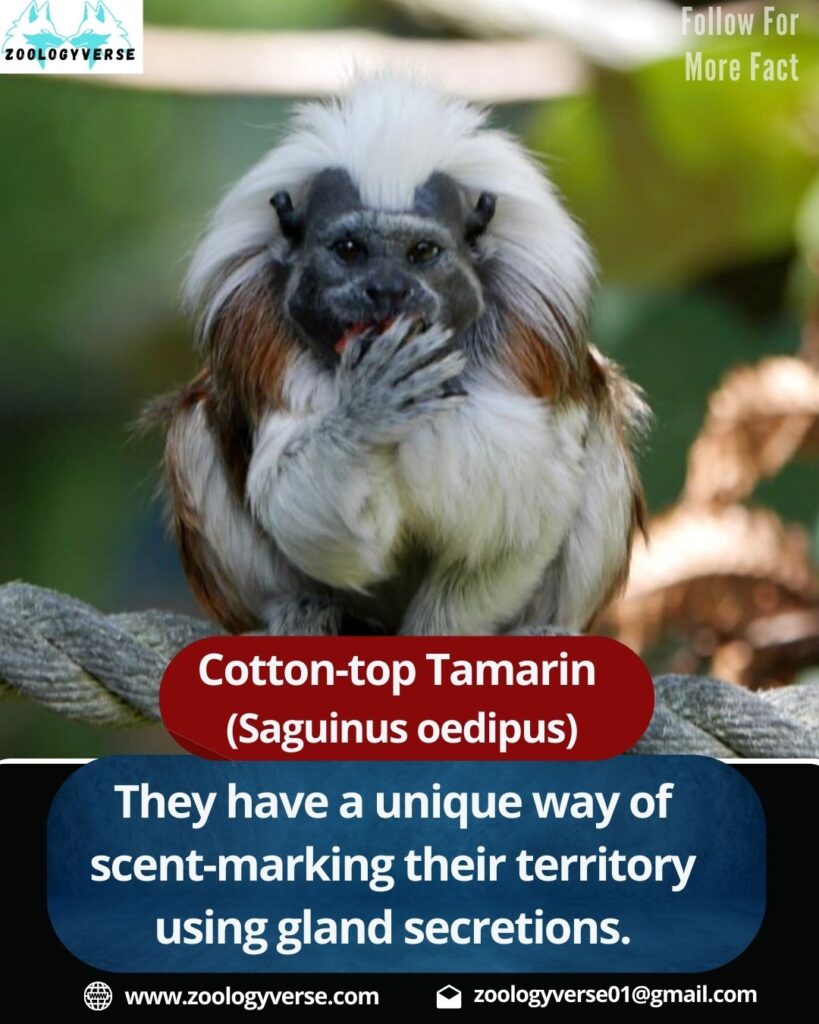
Habitat and Distribution
Cotton-top Tamarins are endemic to Colombia, meaning they are found only in a small region of tropical forests in northwestern Colombia. They prefer living in humid, tropical, and secondary forests, especially in regions with a dense canopy, where they can move through trees with ease.
However, their habitat is shrinking rapidly due to deforestation, agriculture, and urban expansion. This has led to a sharp decline in their population.
Behavior and Social Structure
Cotton-top Tamarins are highly social animals, living in groups of 2 to 15 individuals. These groups typically consist of a dominant breeding pair and their offspring, along with other subordinate members.
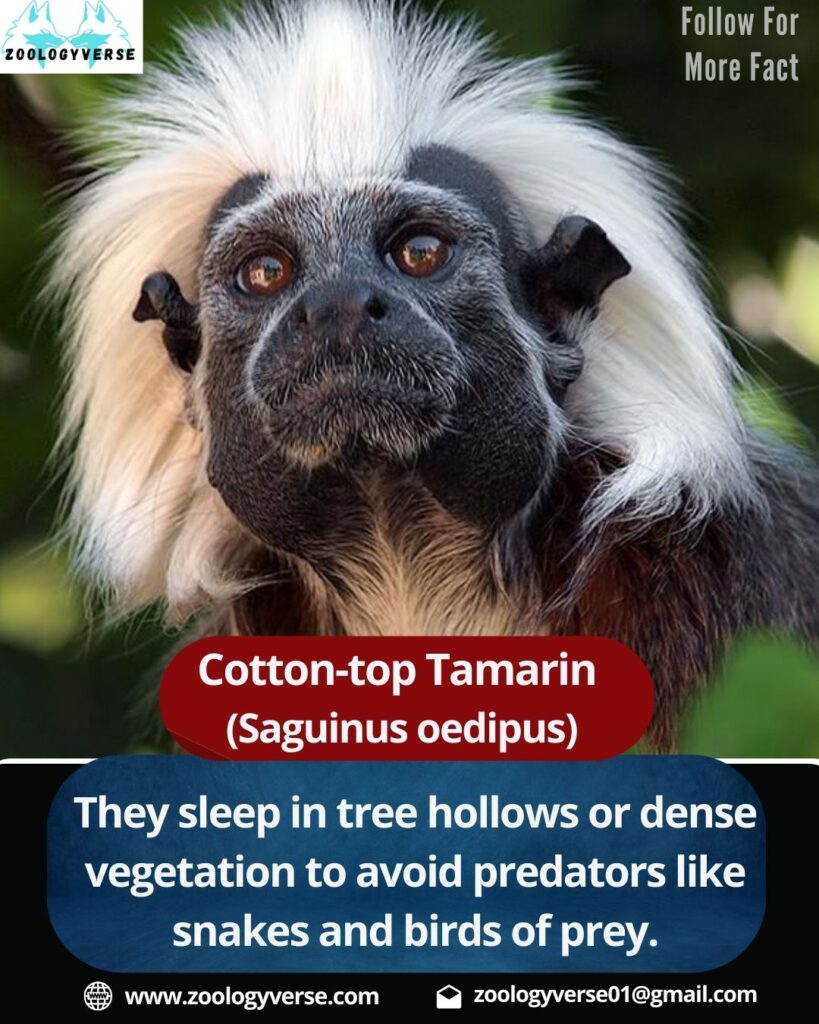
Communication
These small monkeys are extremely vocal, using a variety of sounds such as:
- Whistles and chirps – used for group coordination.
- Trills and screams – signals of danger or warning.
- Clicks and squeaks – used for social interactions.
In addition to vocalizations, they communicate using body language and scent markings to establish territories.
Reproduction and Parental Care
Cotton-top Tamarins have a unique cooperative breeding system, where only the dominant female breeds, and the rest of the group helps raise the offspring. The female usually gives birth to twins, which is common among callitrichid monkeys.
Male tamarins and other group members play a crucial role in caring for the infants, carrying them on their backs and bringing them food.
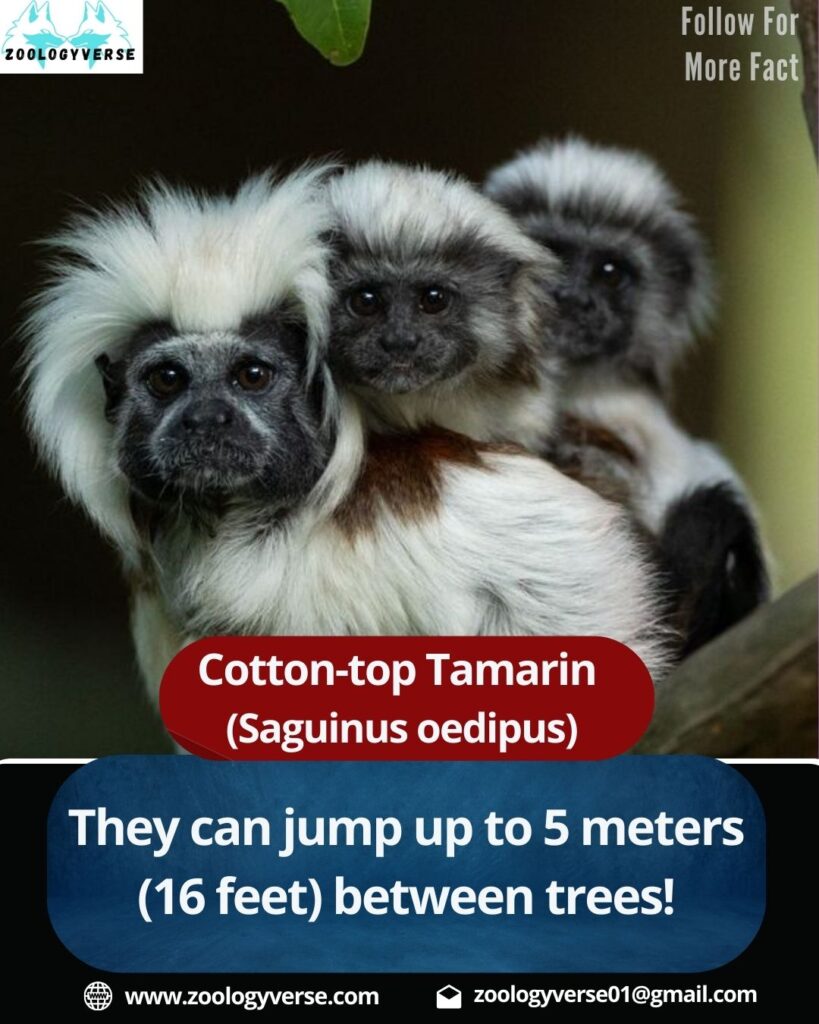
Diet and Feeding Habits
Cotton-top Tamarins are omnivores, meaning they eat both plant and animal matter. Their diet includes:
- Fruits – a major part of their diet, helping in seed dispersal.
- Insects and small vertebrates – such as lizards, frogs, and spiders.
- Nectar and tree sap – providing essential nutrients.
They play a vital ecological role as seed dispersers, helping maintain forest biodiversity.
Threats to Cotton-top Tamarins
Unfortunately, Cotton-top Tamarins face several threats that have drastically reduced their population. The International Union for Conservation of Nature (IUCN) has classified them as Critically Endangered.
1. Habitat Destruction
Deforestation due to agriculture, urbanization, and logging has wiped out nearly 95% of their natural habitat in Colombia.
2. Illegal Pet Trade
Cotton-top Tamarins were once captured in large numbers for the pet trade and medical research. Although international laws now protect them, illegal trafficking still exists.
3. Climate Change
Changes in weather patterns and habitat loss due to climate change are further endangering their survival.
Conservation Efforts
To protect Cotton-top Tamarins, several conservation initiatives are in place:
1. Proyecto Tití
A conservation program in Colombia focused on:
- Protecting remaining forest habitats.
- Educating locals about the importance of conservation.
- Breeding programs to help population recovery.
2. Legal Protections
- Cotton-top Tamarins are listed under CITES Appendix I, which bans their international trade.
- Colombian laws protect them from hunting and habitat destruction.
3. Ecotourism and Community Involvement
Local communities are encouraged to participate in sustainable ecotourism and conservation efforts, reducing deforestation and illegal trade.
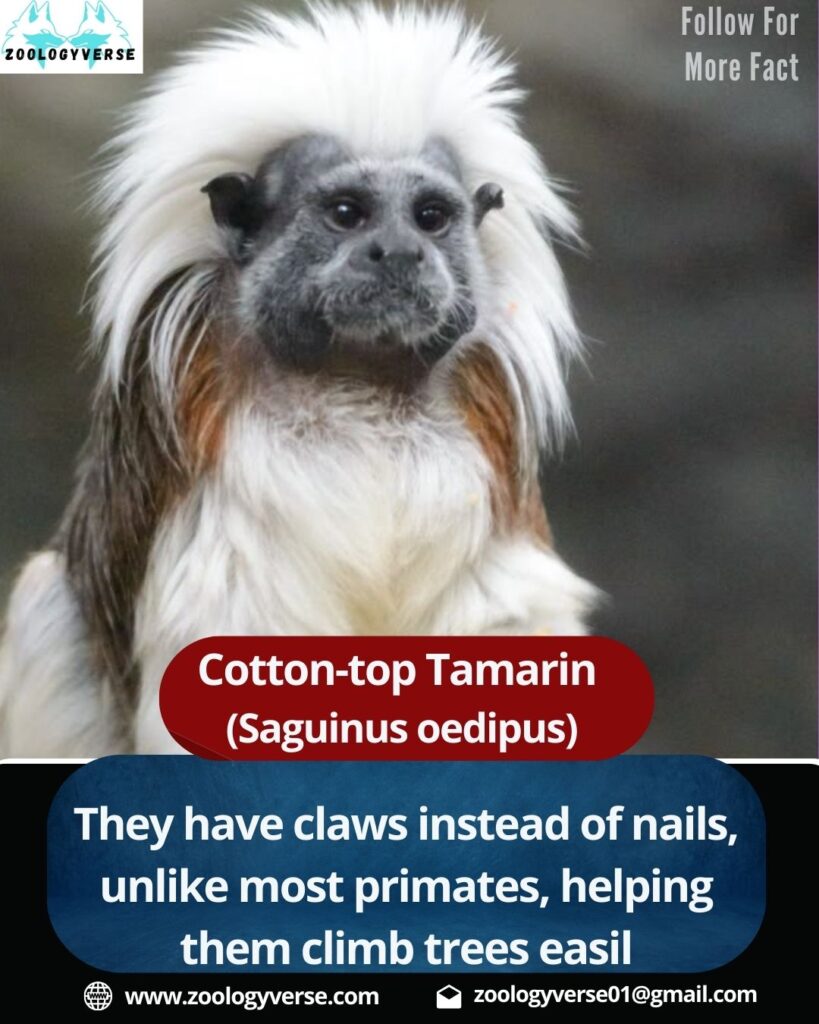
Fun Facts About Cotton-top Tamarins
- They are named after their white “cotton-like” hair, which gives them a striking appearance.
- They have claws instead of nails, unlike most primates, helping them climb trees easily.
- They can jump up to 5 meters (16 feet) between trees!
- They have a unique way of scent-marking their territory using gland secretions.
- They sleep in tree hollows or dense vegetation to avoid predators like snakes and birds of prey.
FAQs About Cotton-top Tamarins
1. Why are Cotton-top Tamarins endangered?
They are endangered due to deforestation, illegal pet trade, and habitat loss in Colombia. Their population has declined by nearly 80% in the last 50 years.
2. Where do Cotton-top Tamarins live?
They are found only in northwestern Colombia, living in tropical forests with dense canopies.
3. How do Cotton-top Tamarins communicate?
They use vocal calls, body language, and scent marking to communicate with each other. Their vocalizations include whistles, chirps, and trills.
4. What do Cotton-top Tamarins eat?
Their diet includes fruits, insects, small vertebrates, nectar, and tree sap.
5. Can Cotton-top Tamarins be kept as pets?
No, they are protected by international laws and should never be kept as pets. They require specialized care and a social environment to thrive.
6. How can we help conserve Cotton-top Tamarins?
Supporting conservation organizations like Proyecto Tití, reducing deforestation, and spreading awareness about their endangered status can help protect them.
Conclusion
The Cotton-top Tamarin is a fascinating and highly social primate that plays an essential role in the ecosystem. However, due to habitat destruction and illegal trade, they are critically endangered. Conservation efforts are crucial to ensuring their survival. By supporting conservation projects and raising awareness, we can help protect this incredible species for future generations.
Would you like to read more about endangered animals? Check out our latest articles on ZoologyVerse.com for more insights into wildlife conservation!
Follow Us on Facebook :- Click Here
